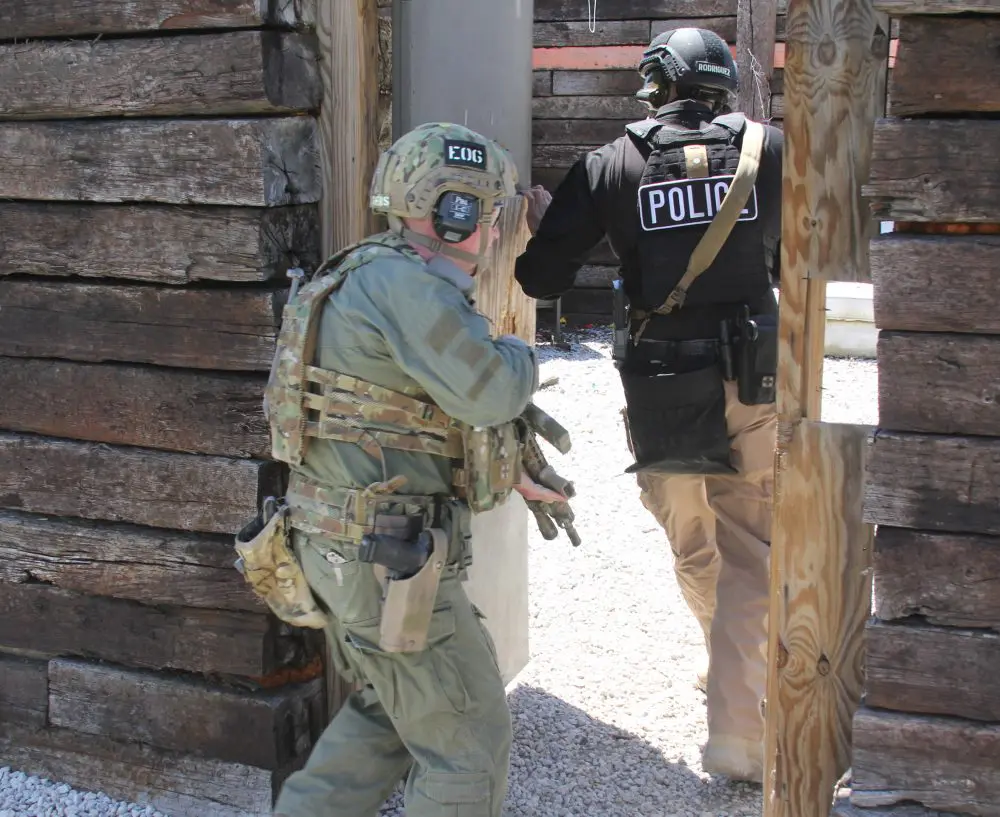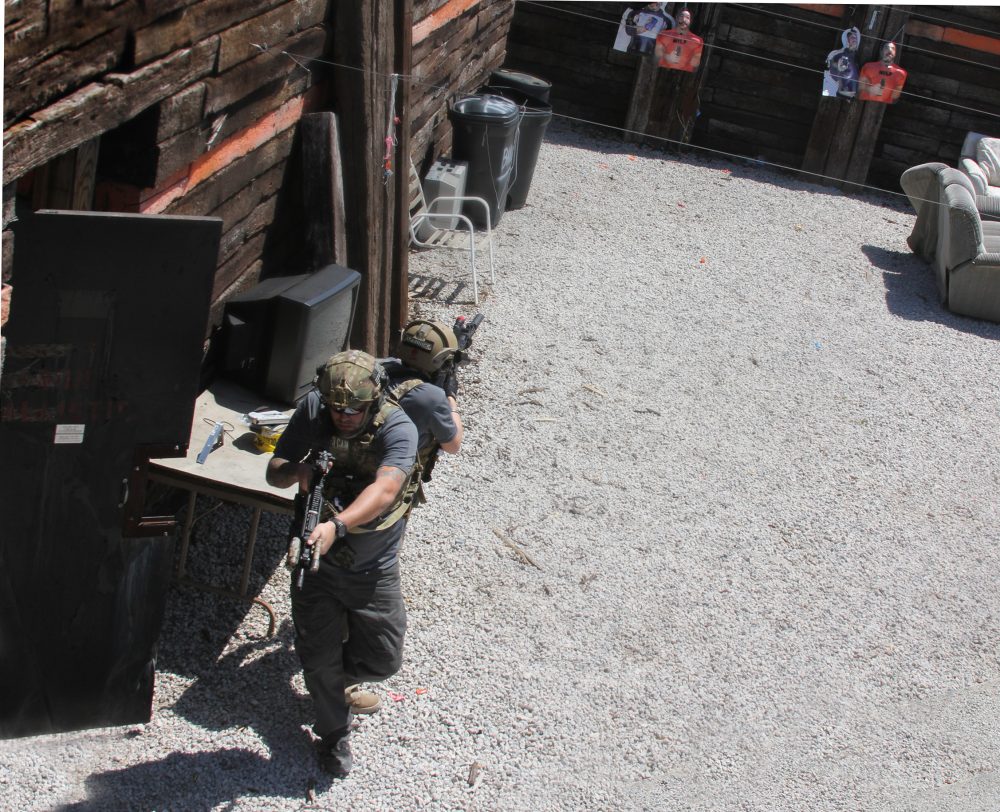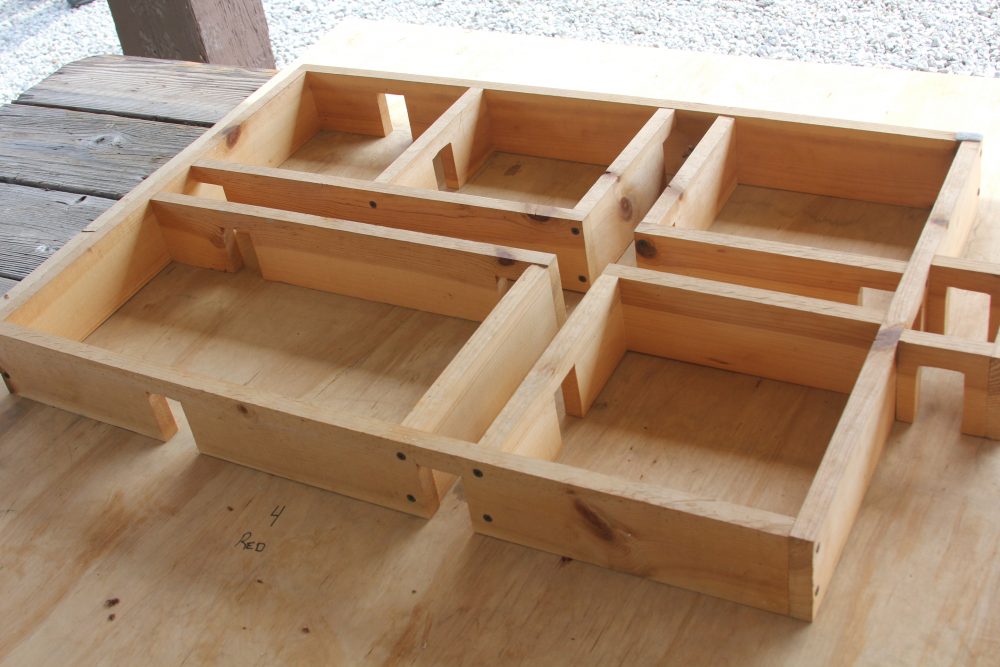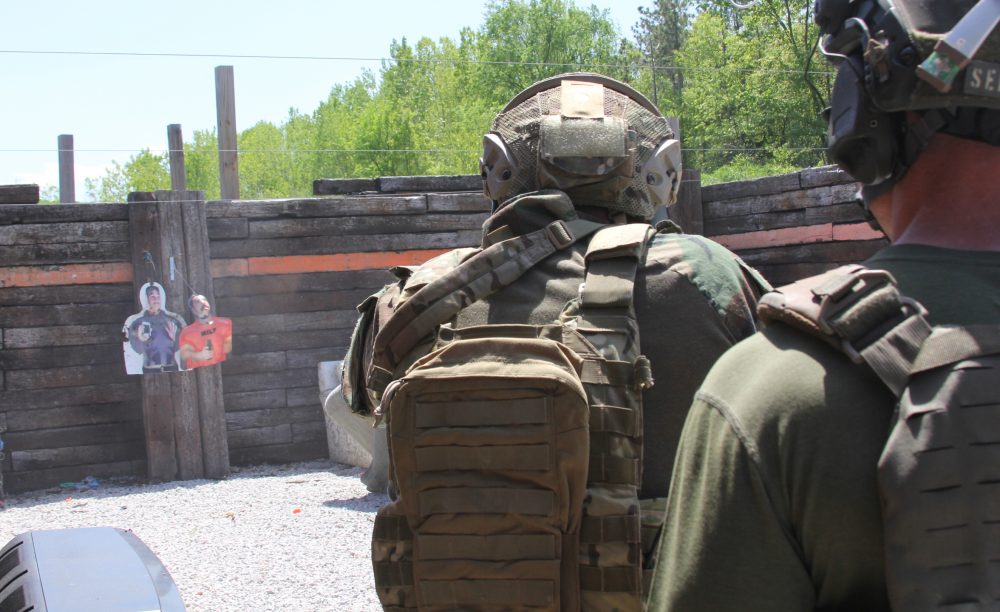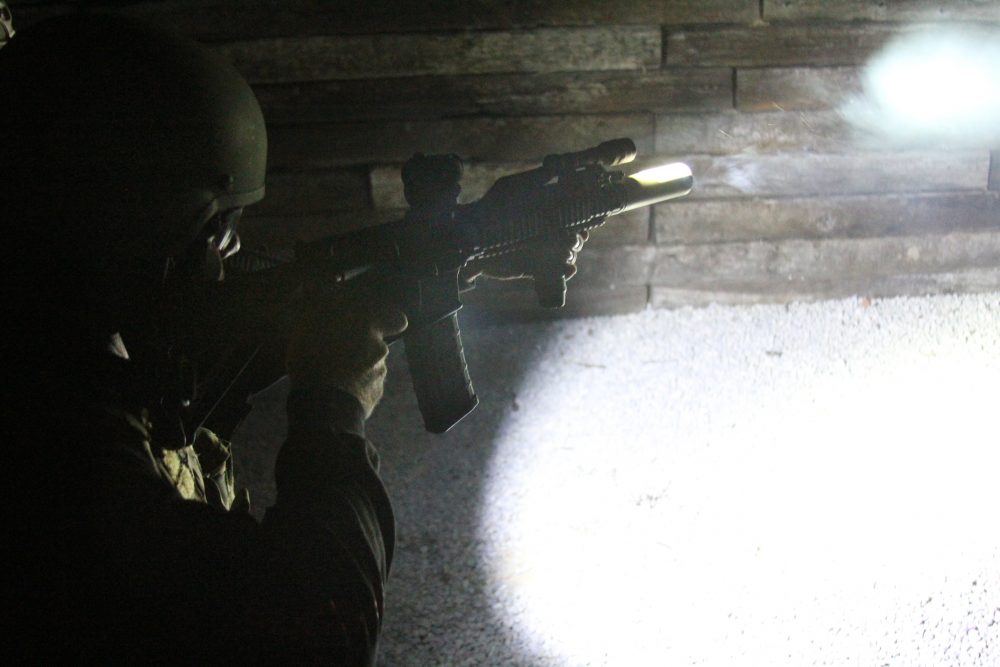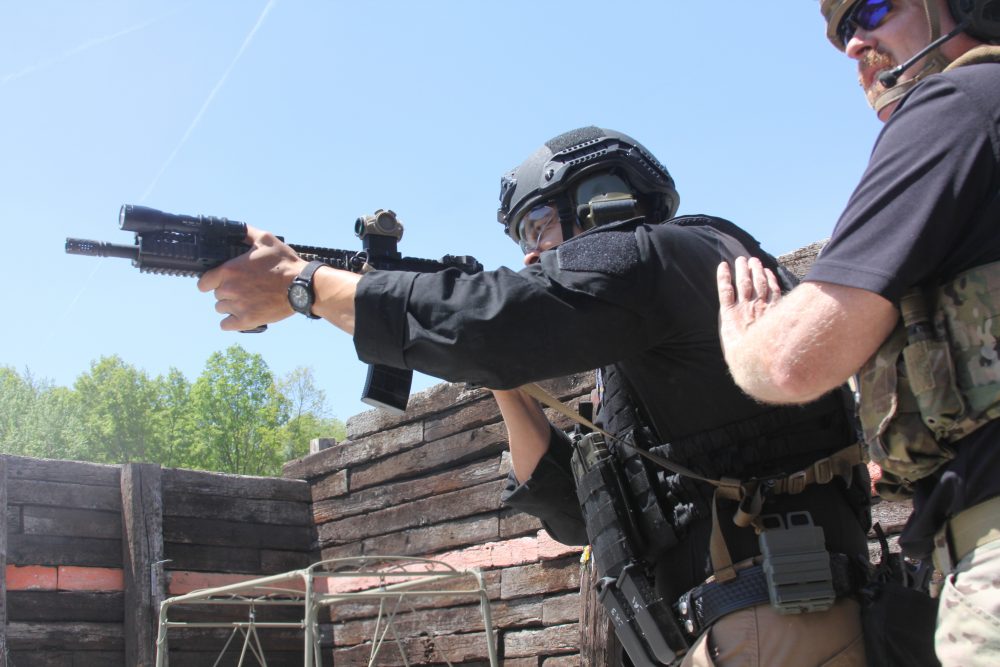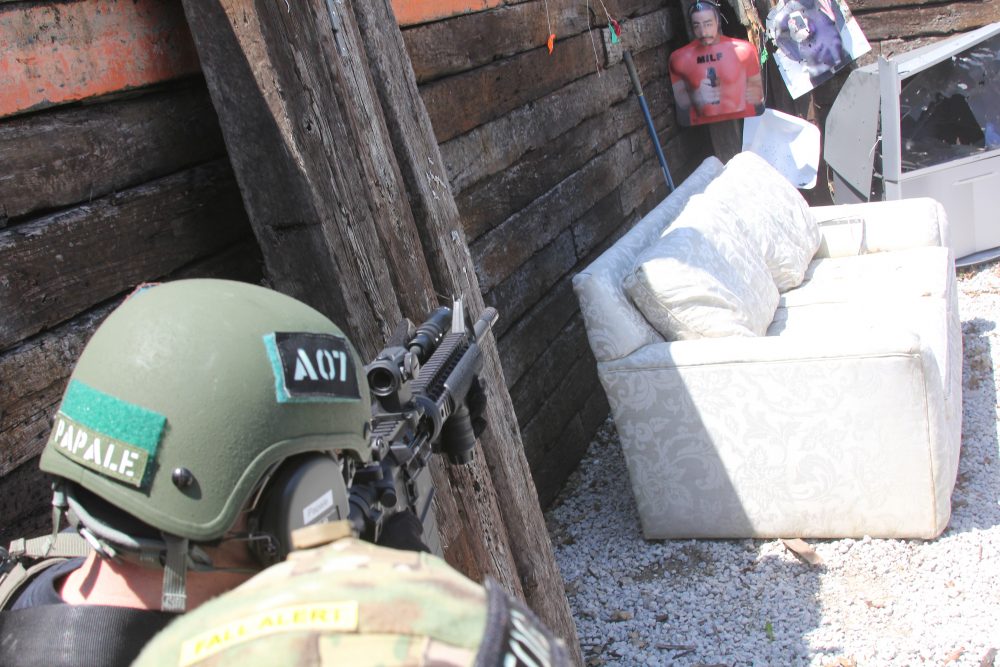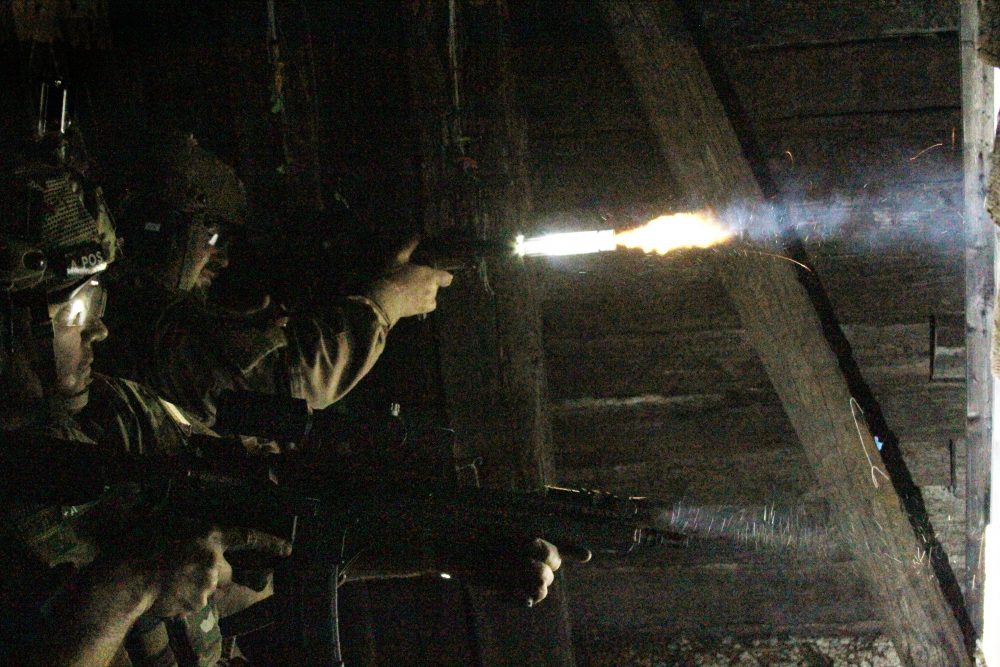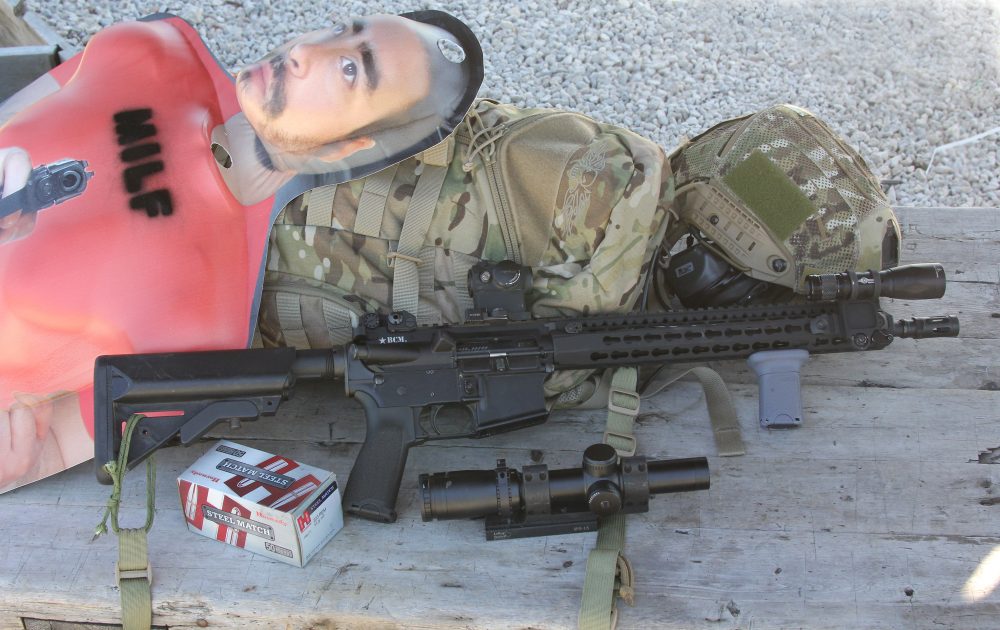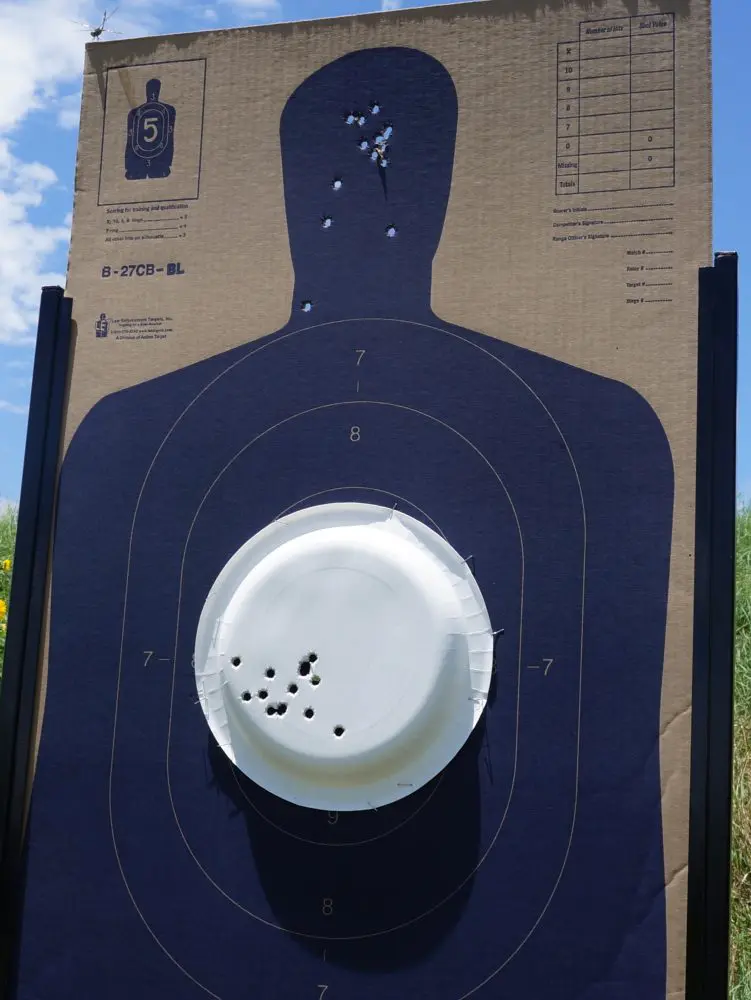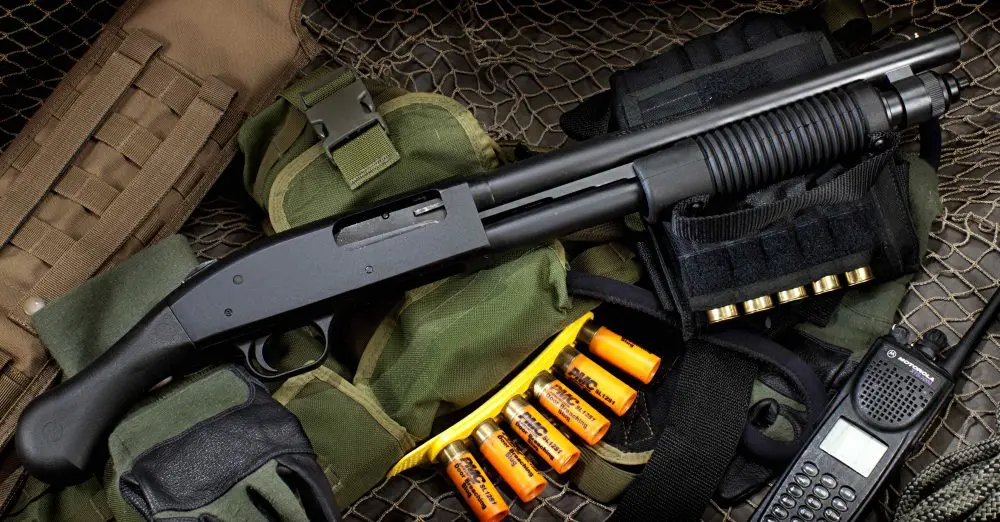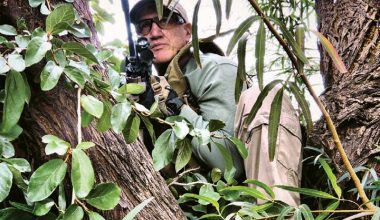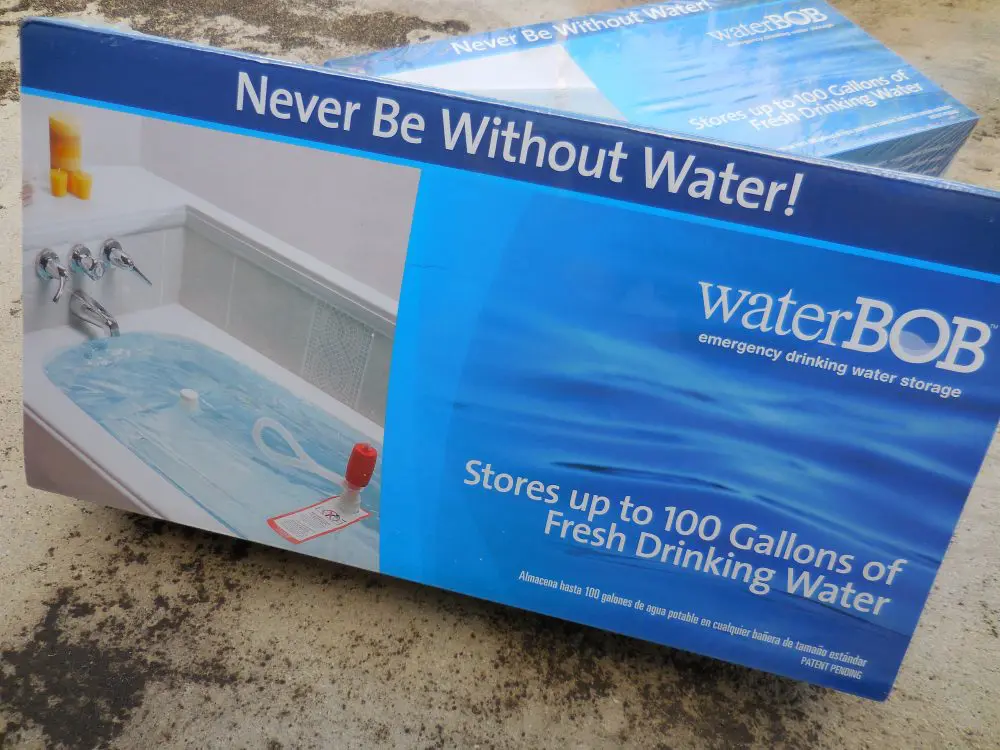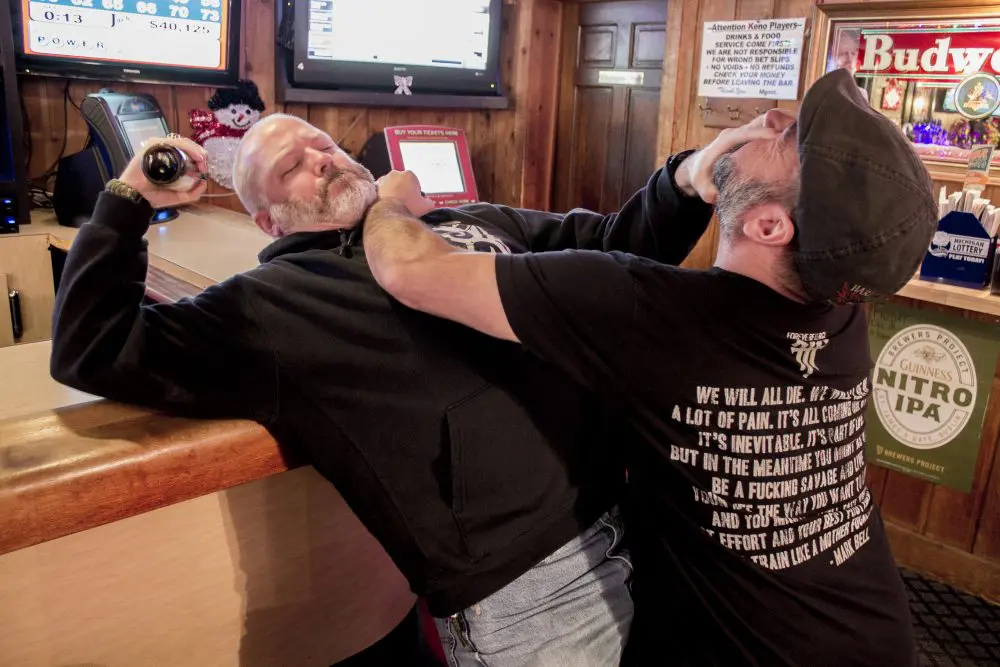EAG Tactical has recently shifted a large chunk of its annual training calendar to shoot house classes and has struggled to accommodate all interested and qualified students. The course is designed as a short dive into the subject built on a two-man team live-fire format.
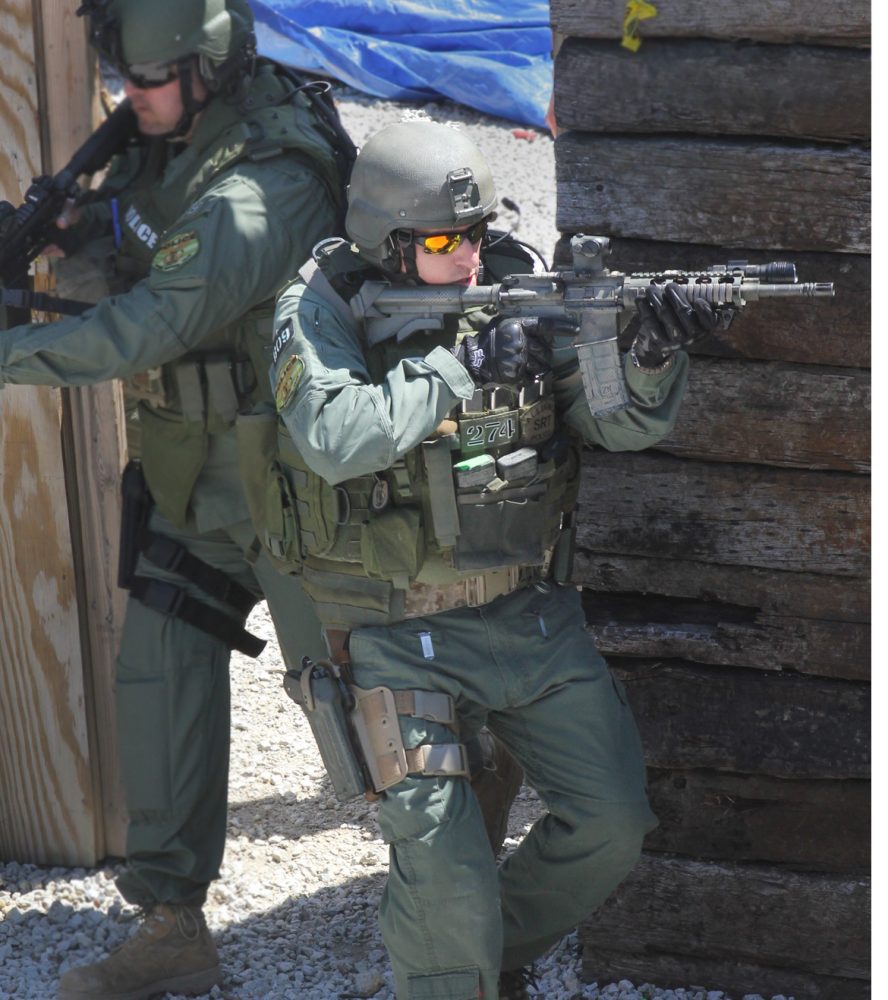
Military units typically deal with “Close Quarters Battle” conducted in, you guessed it, shoot houses, as a training block that averages weeks. The exact length depends on how important the CQB mission is to the unit in question. Therefore I was intrigued when my good friend and S.W.A.T.’s own training guru Pat Rogers asked me to come and check out the course.
This particular course was a four-day shoot house class conducted at the Alliance, Ohio police range. The class was filled to capacity plus, with a mix of industry professionals, cops, feds, military, and dedicated citizens.
In my mind, this is a particular strength of EAG. Pat has earned a client base of dedicated students who are diverse, often highly experienced and well grounded, and relaxed learners with serious intentions. No outsize egos, nutjobs or fumblers to worry about.
As mentioned, the class format calls for two-man teams. Many of the students signed up and arrived together—an ideal training situation. The overall quality of the class ensured that no singleton would be burdened with a bad partner. Pairing students for a high-risk training environment is somewhat of an art. As an instructor, I was impressed with the spot-on pairings across the class—the sum of each team was more than its parts.
Table of Contents
SHOOT HOUSE ALL-STARS
The second readily apparent “plus” was in the assistant instructors. The shoot house class brings in an all-star cast that is the training world’s equivalent of Marvel’s Avengers: stars who teach in their own right but occasionally combine for a mission. This class had John “Doc” Spears, Steve Fisher of Sentinel Concepts, Mike S. from a major city SWAT team, and a brief visit from John Chapman of LMS. The breadth of experience and perspective available to the students was truly impressive.
The class began with dry runs and cone-work focused on basic procedures to negotiate three simple shapes that present themselves in structures. This was a refreshingly simple way to introduce the subject, and the class picked up on it quickly. I have seen tactics take on a dizzyingly complex aspect in other classes and units, so this was a noteworthy angle.
Shooter Two clears his corner as his partner engages threat targets interspersed with unknowns.
A simple L shape applies to many things: a corner, an arrangement of furniture, a visual barrier, etc. Having one “script” to build from when a shape is recognized simplifies the response.
Next the class received instructions on doors and went into round-robin sessions on different styles. In other environments, doors tend to be a big stressor for students. Rigid procedures can lead to all manner of doorway dances as shooters confuse each other and cha-cha around one another into position. The doorway procedures shown were common sense and flexible, leaving the variable on the partnered team to communicate the method and smoothly enter.
INTO THE BREACH
From there the live-fire runs began. Teams rotated into scenarios, each briefed beforehand around a small mock-up of the Alliance PD house. One room, then two, then three: the runs progressed in carefully measured, achievable strides of difficulty and complexity.
After all teams had completed a run, the class huddled for debrief and after-action thoughts and lessons. Many students remarked how effective these group debriefs were both in cementing what had happened and learning from others’ runs.
Scale model of shoot house used for orders and debriefs.
Particularly for those new to shoot house training, the adrenaline surge of opening a door into the unknown to engage a lifelike, reactive threat while attempting to coordinate with a moving, shooting partner can be overwhelming. Some students benefited from the group talk-through afterward to process exactly what had happened when time got all weird.
A fair amount of stress and adrenaline is involved with each run. The pacing of the class allowed as many runs per day as the students were mentally capable of while providing ample recovery time in between scenarios. That way a student could “come down” off the rush, process the critique and group AAR, talk through any adjustments with their partner, and get prepped to do it again.
Targetry used was the excellent ID Target Systems reactive silhouette. The human shape and photo-realism startled more than one shooter upon entry. The targets are suspended from balloons in the head or chest cavity (or both) and drop to the ground when the balloon is struck. The instructors kept the balloons to about a seven-inch average in the chest, smaller in the head, requiring the students to shoot well.
Distances over the course ranged from three to 35 yards, with most in the expected five to 10 yards. This was my first time training with the IDTS target, and I was an immediate fan. The target provided angled shots to the shooter and drew a much different reaction than simple silhouettes, cartoon or photo targets.
I must admit with some chagrin that in an early run, the realism of the target’s facial features pulled me into placing my reticle on the desired impact rather than the needed offset for my carbine—something that hasn’t happened in a very long time with standard two-dimensional photo targets. This was a consistent feature throughout the class, with the realism of the target challenging offset and pulling rushed shots out of magnificent square-range shooters.
Shooter takes head shot in a large room.
The instructors interspersed the same realistic targets with non-threat cues (cell phones, etc) as unknowns in the rooms, forcing students to assess and interact, ideally asking for useful information or intelligence. Those who had the presence of mind to ask occasionally received helpful data voiced with varying degrees of dramatic flair by the instructors.
The shoot house is really a test of the shooter and not so much his or her shooting. The shots are mostly simple “lay-ups” in square range terms, but the shooter must control and work within 360 degrees in relaxed, deliberate aggression, all while reacting to a partner and any cues that are presented.
The two most enduring challenges for most student teams were stripping communication down to clearly passing the critical items and finding a speed that facilitated decision-making and positive control for both shooters. As a result, the biggest lessons for most shooters came in these areas—neither of which can be learned in a shooting class or at the range.
Shooter engages target in a night run. Most students had newer SureFire lights pushing 500 or more lumens.
THE DARK MONSTER
One outstanding feature of the class was the low-light lecture given by Pat with the assistance of Scott Wilson, a SureFire Law Enforcement representative. Pat has actively used and observed weaponlights throughout the lithium, incandescent and now LED revolutions, and his lecture was equal parts technical and tactical history and current best practices.
Nearly every carbine in the class had one of the newer SureFire lights, with the Fury 500- and 1000-lumen models in the lead and a smattering of X300U 500-lumen lights. This was good because the Alliance shoot house is a gravel-decked house with railroad-tie walls and no overhead, a combination that ate lumens like candy, absorbing much and reflecting little light. But with every team sweeping the room with a combined 1,000 to 2,000 lumens, visibility was excellent. The difference was noticeable from the previous standard of 60 to 200 lumens and, along with beam shape and spill in the newer lights, took some of the stress out of the night and provided great awareness of a room.
We were blessed (from a training perspective) with two very dark nights for the night runs, and what Pat jokingly refers to as the “Dark Monster” had an effect on every team at some point. The difference between shooting a carbine on a dark range using a light and using the light to move, find and engage targets is stark.
With Doc Spears observing, California officer engages target in his sector. Instructor quality and positive control allowed realistic scenarios and outstanding coaching.
The shoot house tends to magnify personality traits. The aggressive can become reckless and the cautious hesitant. Darkness intensifies this effect. Any procedures that had not been smoothed out between partners were challenged as the ability to see one another diminished. The great spill and candlepower of the lights were being directed into a sector of fire or direction of travel. The partner was in the dark spot behind his or her light, cutting nonverbal communication down to signaling with laser or light.
I followed most teams behind the instructors trying to snap photos, and saw that even veteran shooters were challenged and learned things in the night runs. Not surprisingly to any old instructors reading this, all students shot better in the dark runs.
Pat Rogers enters with student as his number two man to help illustrate a teaching point.
COLLABORATION
There are many contexts for hunting another in a structure. Even within the military or law enforcement, the exact context can change what is the best way to proceed. But CQB tactics, techniques, and procedures are a minefield of strongly held beliefs and dogma.
I was partnered with “Dan,” a Pittsburgh-area SWAT cop, so our team had one military and one LE shooter, each with our own “native” unit SOPs and experience-based preferences working off of class-taught procedures and neutral scenarios. It was a very rewarding experience that made both of us carefully consider our own “way” as well as the other’s and the common class techniques. Not unlike the Reese’s Peanut Butter Cup experience, where mixing two good things results in something better.
As the runs ramped up in duration, difficulty, and overall twists and considerations, we adapted and learned from each other as well as the excellent critiques offered by the EAG staff. Watching other teams, I was equally impressed by how they clicked, quickly owning the simple techniques and executing runs by the end of class that would equal the difficulty found in the latter weeks of most formal CQB classes.
SWAT cop engages IDTS target. Shot is often the “easy” part—moving and communicating with a partner in a realistic setting are the greater challenges.
BACKSTOP
Moving and shooting with others in a 360-degree environment is dangerous, but also necessary as the next incremental step in being best prepared for those who go inside after bad guys. But having worked at a number of schools that teach this stuff, I can appreciate the risk and what it takes to teach it correctly and safely. I was impressed (although not surprised) at the backside of the EAG class. The instructors were disciplined in all the little checks and safety assignments that are largely transparent to the student.
Every shooter had an instructor “ghost” who maintained positive control of the shooter through every run while carefully keeping out of the way. Each run was set up from a thoroughly vetted playbook that has been developed over years to synchronize learning objectives and de-conflict possible student movement variables.
Injuries in formal CQB courses often correlate with improvisation on the ground, with an instructor setting up movement or targetry in a way that inadvertently encourages risky positioning or confusion by the student. There is a huge difference between formal professional training and unit-level training where a small group may do risky things and beat the odds. In a formal setting, the sheer numbers ensure that statistics catch up and Murphy presents himself. The sizable chunk of EAG shoot house students who are themselves trainers at their organizations are seeing it done well.
Simplification can go in two directions: watered down such that it resembles the real deal but isn’t truly, or distilled into its purest form.
Having had some time afterward to reflect on how far the class progressed in four days, it’s pretty clear that EAG has successfully distilled the essential fundamentals for the shoot house.
Shooter takes shot from corner doorway to eliminate threat deep in a room during night run.
PROVING GROUND
The shoot house is a specific environment that is tough to replicate: high stress, mission specific, and the shooter enters blind to the layout and occupants and must react. This was a great way to put some final polish on evaluations of items I was working with.
Along with trusted favorite gear, I rotated in some newer items. I used a Crye AirFrame helmet and now see what all the hype is about. Simply impressive stability and comfort. I ran a BCM upper on my carbine with the new KMR handguard and 14.5-inch lightweight taper barrel. It was perfectly suited to the house, with more than enough accuracy to work the perimeter.
I split the runs on optics, running half with a Bushnell Elite 1-6.5X SMRS and half with my well-worn Aimpoint T1 red dot. The 1-6.5X is not designed expressly for the house, but it worked well both day and night. The Aimpoint is the better mission-specific choice, but I was very pleased with the ability to take a mid-range optic inside and lose very little performance.
For ammo, I used a mixture of Hornady Training and Steel Match, both steel-cased 5.56mm loads that performed 100%.
Author’s class gear. Shoot house environment allowed well-rounded, mission-specific environment for evaluation.
My light was an early SureFire Fury that had some switching issues—the only light issues that I saw in the class. Replacing it with a newer Fury solved the problem. Lights evolve so quickly that becoming attached to any one model is a bad idea, but the 500-lumen Fury may for the moment be my personal benchmark for blend of weight, size, power, and beam shape.
Other students were likewise working over some of the latest equipment trends. Two shooters ran SIG-braced AR pistols as primaries. The results were one thumbs up while the other gave it up and went back to a 14.5-inch carbine. Approximately 20% of the pistols present had Trijicon RMR red dots mounted. One made a first-attempt head shot at 25 yards that the shooter attributed in part to the fine dot. Another 20% of shooters ran suppressors, comparing the upsides to the additional length indoors.
EAG SHOOT HOUSE BY THE NUMBERS
- Live-fire runs: 17
- AARs: 17
- Doorways: 53
- Pistol transitions: 2
- Threats: 50
- Average number of shots to neutralize: 3.4
- Industry professionals as students: 8
SOURCE
EAG Tactical
(928) 636-6686
www.eagtactical.com
